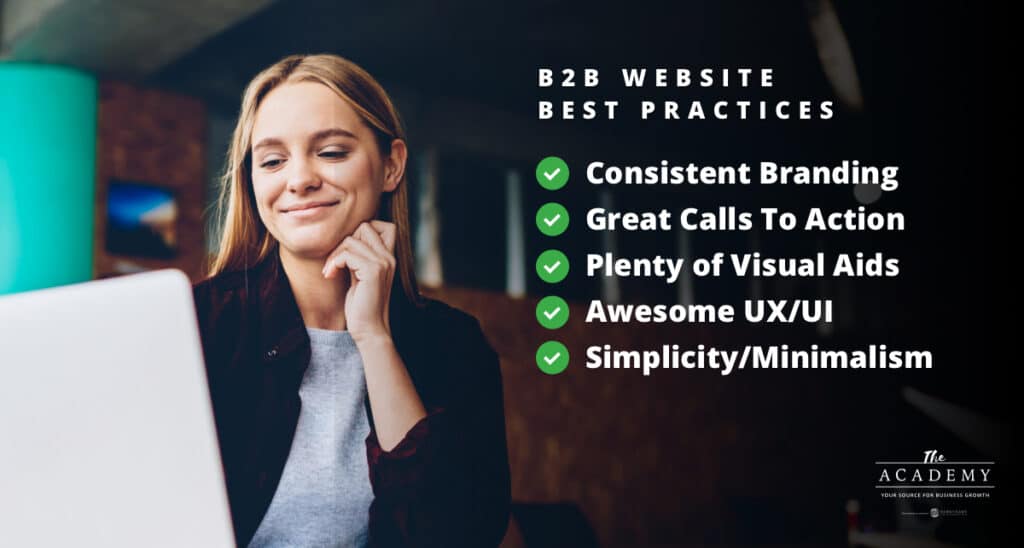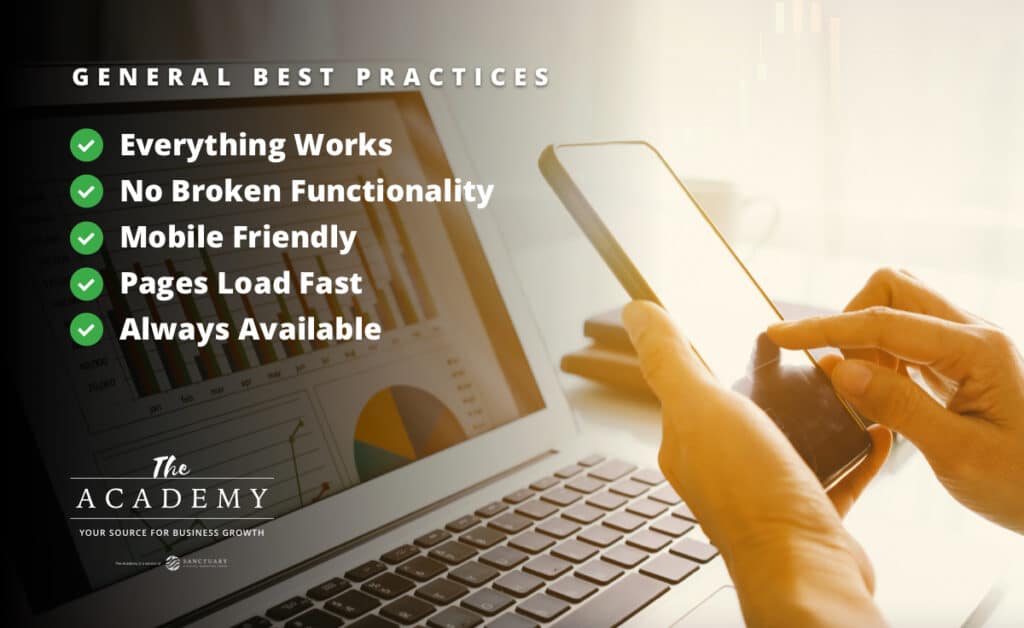
Building any website is a challenge. But, building an amazing website is an even bigger mountain to climb. There are many different parts of the process that need to come together perfectly to produce a successful finished product in the end, including strategy, design, programming, content creation, quality assurance, and much more. Careful planning and plenty of hard work will always be required for any kind of quality website to be the end result.
When it comes to building a B2B (Business to Business) website, there are some specific points to keep in mind throughout the process. Those points are going to be the focus of this article. Whether you have experience with B2C website design and need to understand the key differences for B2B, or you are getting started on your first big website project, the information below should be helpful. Let’s get started!
B2B vs B2C Websites – The Fundamental Difference
There are plenty of similarities between B2B and B2C (Business to Consumer) websites, and we will talk about some of those at the end of this article. However, there is a fundamental difference in how these two types of sites approach grabbing attention and making sales. With B2C, the focus tends to be on making an emotional connection and going for an immediate sale.
For example, a company selling vacuum cleaners to consumers might highlight the frustrating problems that are experienced with many vacuums and the time that can be wasted along the way. When the potential customer feels those negative emotions and remembers recent negative experiences, they will be more likely to make a purchase and avoid future frustrations.
B2B tends to be less emotional and more pragmatic. The person making a decision on behalf of a business isn’t likely to get caught up in the emotion of the moment – they are going to look at this purchase from a black-and-white perspective, trying to sort through the various options to select the suitable solution to their unique needs.
So, educational content like case studies and informational white papers tend to be more useful here. Giving decision-makers as much hard data as possible to support working with you is going to make their job easier. If they need to present your business at a meeting or to a boss in the hopes of gaining budgetary approval, you want them to have everything that is necessary to make a compelling argument.
Key Features of a Great B2B Site
It’s impossible to say exactly what should be on every B2B website, as all businesses are unique and the features and information you need to present will be different than others. With that said, there are some features that are generally going to apply to most businesses, so we’ll present those below. As you review this list, think about each point in the context of your business to determine whether or not that given feature would be applicable to your needs.

- Consistent branding. A big part of what you need to accomplish with your site is building trust with your audience. You want them to see you as a professional, reliable source for what it is they need, and solid branding across all of the pages is a step in the right direction. Feature your logo on every page, use the same colors throughout the site, and don’t include elements that seem to stand out as not fitting in with the rest of the branding.
- Great Calls To Action (CTAs). The objective upon receiving a potential lead on your site is to prevent them from merely browsing around before leaving and exploring elsewhere. Instead, the goal is to get them to reach out and connect with you to learn more and take the next step in their journey as a buyer. That isn’t going to happen without an excellent set of CTAs throughout the site to encourage the desired actions. Each CTA you place on your pages should ideally be customized to the context of the page that it is on, as well as the phase of the buyer’s journey.
- Plenty of visual aids. Not everyone wants to read a long piece of content. Especially when they are in the middle of a busy workday and trying to find a solution to their problem as quickly as possible. Create visuals that will help make your key selling points without forcing leads to read through long web pages. Good visuals might include graphs or charts that highlight the benefits of what you are selling, or images of your products in action for other clients. The images in this article are a great example.
- Awesome user interface and user experience. This is another point that is crucial because of the limited time you have to grab the attention of the person on the other end of the screen. They need to quickly find what they are looking for to determine if your business might be the solution they require. So, use organized menus at the top of each page to make navigation a breeze, and generally organize and design the user’s experience on your site to be the best it can be.
- Favor minimalism. Your B2B website shouldn’t be a place to show off your creativity by over-designing the presentation. Instead, the site is there for the very specific purpose of earning new customers, and it is going to perform that task more effectively through the use of a minimal design. Most of the time, simple is better. Keep the elements simple, use plenty of white space, and make sure the finished product is easy and enjoyable to read.
An Important Warning
In some cases, businesses will go too far in an attempt to create a website that feels like it is suitable for B2B purposes. In other words, they’ll design a site that is way too formal and impersonal. You want to speak to your target customers like a real human and in a style that they’ll connect with.
Speaking formally can be the right line of thinking in some markets. However, you need to remember one important fact that isn’t going to change no matter what kind of businesses you target with your products and services – the businesses you hope to acquire as clients are made up of real people. A site that is too firmly rooted in direct, technical language might wind up sounding cold and corporate, as if it was designed for a robot rather than a person. Even if you are marketing to large corporations with huge budgets, there are still humans making the decisions, and it’s best to talk to them like real people through the content you put on your site.
One good way to address this issue is simply to give your site, or any new pages that are going to be added to your site, a final read-through before publishing. You will already have done all of the strategic thinking about what kind of message you want to convey and what style you’d like to use. For this last reading, you need to set aside your analytical hat and just read the page as a person and add a human touch wherever you can. Does it connect with you as a reader? Is it engaging, or is it too technical and boring to grab your attention? Performing this kind of review at the last minute can help you tweak the copy to give it a slightly more personal, authentic touch.
Some Things Don’t Change
We thought it was important to wrap up this article by highlighting some of the key factors of building and running a website that don’t change no matter who you are serving. You can think of these as the website fundamentals that apply to B2B, B2C, or any other type of site you happen to own. If you are hitting on all of the points below, your site should be in good shape to find and serve its target audience.

- Everything works. When someone lands on your website, they should find that all of the various features work as they should. Links are at the top of that list. Nothing takes away from the experience of using a website faster than clicking on a link only to find that it is broken and doesn’t take you anywhere. Beyond links, you’ll want to confirm that all of your forms are functional, any media components play as they should on various devices, and that there are no rendering issues that cause the pages to be hard to read or use. It’s worth adding a periodic review of the site as a whole to your calendar just so you can track down any problems that might pop up as the website evolves and grows in the future.
- Mobile-friendly. These days, a mobile-friendly presentation is a requirement, rather than an optional upgrade. It’s likely that more than half of your traffic will be coming from mobile devices, so the look and feel of your site on those devices should be a top priority. There used to be a line of thinking that B2B sites didn’t need to worry as much about mobile-friendliness, as people were likely at work and using a desktop computer to explore your pages. Even if that was true at some point, it’s not true today – every site, including B2B sites, needs to be mobile-friendly.
- It’s fast. Modern internet users expect websites to be fast. If people land on your site and they have to wait longer than usual for the various pages to load, they might become frustrated and just give up and leave. Not only will slow load times harm the user experience, but you might also see a drain on your SEO efforts as the result of bad page speeds. There are a variety of tools and services available today to help your site pick up the pace, so spend some time on this point and make sure that future changes to your site don’t accidentally take away from how quickly the pages load.
- It’s always available. Finally, you need to be working with a hosting company that is going to have your site up and live on the internet at virtually all times. Intermittent service outages are simply not acceptable in this day and age. Fortunately, most respectable hosting companies will get you as close as possible to the 100% uptime mark – and if yours is falling short, it’s time to look for an upgrade. Also, if you happen to be hosting your site in-house, that approach might be leading to more downtime than is necessary and it could be creating excessive overhead. Consider moving your hosting to a specialized third party for better results and controlled costs.
Investing in a quality B2B website might not be an easy job, but it will be worth it in the end if you are left with an asset that is able to consistently produce leads, promote your brand, and grow the company over time. We hope the information and ideas included above put you on the right track with this exciting project. Good luck!
Most Popular Articles

Seeing Favicons in Your Google Search Results? Here’s Why…
Have you noticed anything different in your Google Search results lately? Google added tiny favicon icons to its organic search results in January. It was…

Business Growth and Digital Marketing News & Tips 11-17-24
Are you encouraging and rewarding innovation? Lee Cockerell is the former Executive Vice President of Operations at Walt Disney World. A lover of traditional red…

Business Growth and Digital Marketing News & Tips 11-27-24
A culture of gratitude "Feeling gratitude and not expressing it is like wrapping a present and not giving it." – William Arthur Ward Beyond being…








